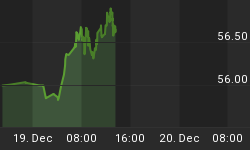"Collapsing confidence is generally described as a bursting bubble, an event incontrovertibly evident only in retrospect." - recovering short seller
There are 160 references to "housing bubble" on SafeHaven.com and you've read practically every article. You sold your house, filled two safe deposit boxes with Kruggerands, and bought put options on the HGX (Philadelphia Housing Index). You even named your bulldog puppies Noland and Faber. Let's face it, you're every bit as obsessed as the condo flippers, twenty-something leveraged landlords, and Trump seminar faithful. Your wife is questioning your sanity and you are beginning to wonder if she's on to something.
Sure, bust follows bubble as predictably as concussion follows a swan dive into the shallow end of a pool, but when? Can the powers-that-be keep the party going indefinitely? Can the HGX double, rendering your option strategy an exercise in futility and grounds for divorce? Can any mere mortal really know the timing of a bubble?
The honest answer is that recognizing folly is much easier than knowing its natural limits. As Sir Isaac Newton lamented in 1721 after losing his shirt in the South Sea bubble, "I can calculate the motions of heavenly bodies, but not the madness of people."
Although history rhymes, the great bubbles of at least the past century have followed a remarkably similar script right before they popped. As absurdly high valuations weigh on relentless injections of liquidity, the advance narrows. Former favorites are treated like lepers while the remaining beauty queens become the focus of intense adoration and pursuit. Eventually, even the central bank bubble blowers get cold feet and begin posting speed limit signs by raising rates. Initially the crowd runs right through the signs, taking their speculative vehicles on a reckless, parabolic joyride. As higher rates slow liquidity, speculators sell their losers in one last desperate attempt to get their hands on more fuel. The jig is finally, mercifully, up.
The Roaring '20s ended with the Dow peaking in August, 1929, well after the broad market, as represented by the NYSE advance-decline line, was in full retreat. In 1972, growth stocks like Coke, Polaroid, Xerox, and IBM were all the rage during a two-tiered "Nifty Fifty" market that ushered in the 1973-74 collapse - rivaling its 1929-32 cousin in inflation-adjusted terms. The March, 2000 Nasdaq peak was a similarly bifurcated affair, as the performance-chasing masses unloaded their Old Economy laggards in order to make room for more Internet, telecom, and technology stocks. The Nasdaq Composite proceeded to lose 78% of its value in 2 ½ years.
Before we fast forward the tape to today's market, a word of clarification is in order. The bubble du joir is not so much in housing as it is in credit. We are hard-pressed to know who is crazier, the borrower swimming without a bathing suit or his Pollyannish lender. Not all regional housing markets are in bubble territory, but credit availability, rates, and standards are clearly detached from reality.

Credit-related stocks, as measured by the Bearing Credit Bubble Index, rose ten-fold from 1995 through the end of 2004. Its eight sub-indices (banks, brokers, subprime lenders, etc.) were all in sync until mid-2003 when the government-sponsored enterprises began to lag. The speculative darlings of the past 2 years have clearly been the homebuilders (+170%) and subprime lenders (+107%). This year the subprime lenders hit the wall, leaving the homebuilders alone to carry the speculative torch. The remaining credit providers and facilitators (especially those weighed by heavy market capitalizations) are now either stalled or joining the GSEs in full retreat:
| Industry Group | Year-to-date Performance | Average Market Cap |
| Homebuilders | +38.8% | $10.7 billion |
| Brokerage firms | +2.0% | $41.4 billion |
| Credit insurance | -1.9% | $6.2 billion |
| Non-bank financials | -4.3% | $365.9 billion (GE) |
| Money center banks | -5.3% | $141.6 billion |
| Credit cards | -5.9% | $40.7 billion |
| Subprime lenders | -6.2% | $8.4 billion |
| GSEs | -16.8% | $48.8 billion (FNM, FRE) |

With the stocks of the country's largest credit engines - Citigroup, JPMorgan Chase, and Fannie Mae - shutting down and nearing 2-year lows, this credit rocket is sputtering on fumes. Mr. Greenspan, we have a problem.















